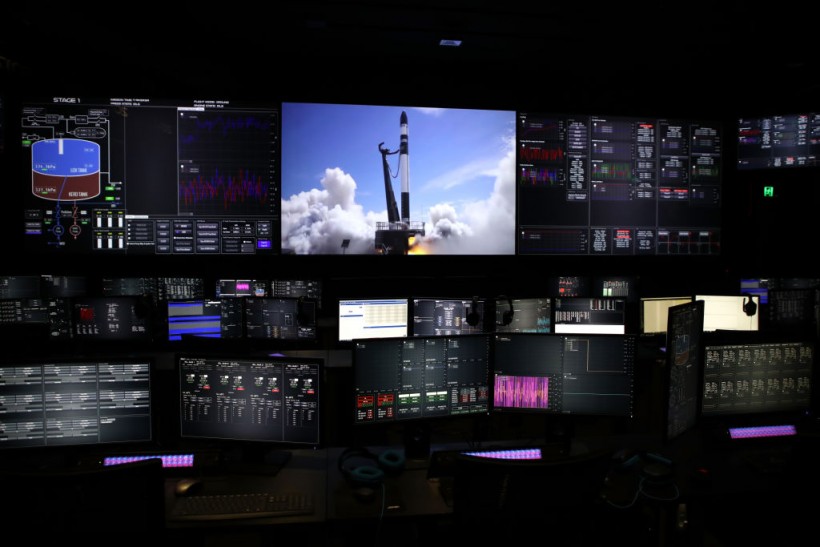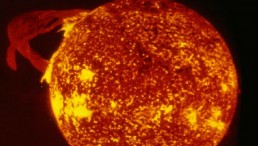Rocket Lab successfully launched a StriX satellite for Japanese company Synspective into orbit using an Electron rocket for its first launch of 2022.
The mission, dubbed "The Owl's Night Continues," was the first to be launched from the company's newly constructed Pad B in New Zealand.
With a broadcast on RocketLab's YouTube channel embedded below, Rocket Lab launched "The Owl's Night Continues" at 3:37 p.m. EST.

AUCKLAND, NEW ZEALAND - OCTOBER 12: The Rocket Lab Mission Control room during the opening of the new Rocket Lab factory on October 12, 2018, in Auckland, New Zealand. The new building includes a new Mission Control Centre, which will oversee launches from Rocket Lab's Mahia Peninsula launchpad and chief executive Peter Beck says 16 flights are planned for next year.
Tech Crunch said Rocket Lab plans to enhance its launch cadence with the additional pad, which joins Rocket Lab's Pad A at the same location and a yet-to-be-used pad at Launch Complex 2 at the Mid-Atlantic Regional Spaceport (MARS) on Virginia.
Today's launch will be the 24th for an Electron rocket, and while its boosters have previously been retrieved, the firm will not attempt to do so on this mission.
"We're continuing to test systems associated w/ recovery, including enhanced batteries to boost [the] performance of the 2nd stage to offset any mass gains associated with 1st stage recovery systems," Rocket Lab wrote in a tweet.
As we all know red = recovery BUT we're not recovering the 1st stage from this mission. We're continuing to test systems associated w/ recovery, including enhanced batteries to boost performance of the 2nd stage to offset any mass gains associated with 1st stage recovery systems.
— Rocket Lab (@RocketLab) February 28, 2022
Rocket Lab Successfully Launched StriX Satellite
The mission is Rocket Lab's second for Synspective; the first, "The Owl's Night Begins," was launched in December 2020 and successfully delivered a StriX satellite.
These satellites are part of Synspective's planned network of 30-plus synthetic aperture radar (SAR) satellites to monitor minute changes on the Earth's surface for urban growth, infrastructure monitoring, and disaster response.
Rocket Lab has confirmed its larger, crew-capable Neutron rocket will be made and launch in the US. Here's an artist impression of the Neutron manufacturing complex planned for Virgina, which the company says will create 250 jobs https://t.co/v5WBVNxd8L pic.twitter.com/0A2y6wDDpD
— Chris Keall (@ChrisKeall) February 28, 2022
ALSO READ: NASA, SpaceX Wants to Make New Starship Launch Pad in Kennedy Space Center to Replicate Starbase
Rocket Lab will launch two additional StriX satellites for Synspective after today's mission, one in 2022 and the other in 2023.
According to the press kit for "The Owl's Night Continues" obtained by Space.com, the addition of Pad B increases Rocket Lab's responsive launch capabilities.
The satellites also support an increased launch cadence by eliminating the time it takes to recycle and prepare the current pad between missions, making it possible to launch multiple missions just days apart.
A third launch pad has been built at the Mid-Atlantic Regional Spaceport on Virginia's Wallops Island by Rocket Lab. Rocket Lab has been unable to fly from Virginia due to delays with a NASA-developed autonomous flight termination technology.
However, the agency just made that technology available to industry partners, so the startup may soon be able to launch from the site.
"The Owl's Night Continues" is not the first mission Rocket Lab has flown for Synspective; in December 2020, an Electron launched the StriX- satellite on "The Owl's Night Begins." Synspective is constructing a constellation of more than 30 Strix satellites that will use synthetic aperture radar to survey the Earth.
According to Rocket Lab, these spacecraft would "collect data from metropolitan areas on a daily basis to enable urban growth planning, building and infrastructure monitoring, and emergency response."
Rocket Lab is trying to make the first stage of the two-stage Electron reusable; the business has sent Electron boosters back to Earth in gentle ocean splashdowns on numerous prior missions and salvaged them for study and analysis. According to corporate authorities, "The Owl's Night Continues" did not contain such a comeback.
RELATED ARTICLE: SpaceX Attempts to Beat Booster Record on Starlink Satellite Launch Aboard Falcon 9 Rocket Early Saturday
Check out more news and information on Space in Science Times.














